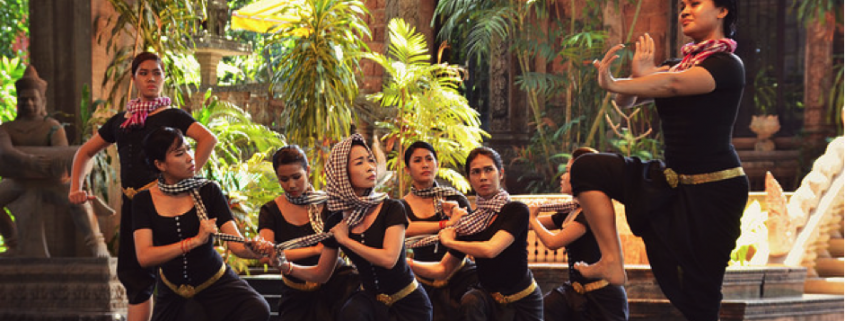The haunting shadows of the trauma of forced marriages during the Khmer Rouge Regime expressed through classical dance
On 16 November 2018, the Trial Chamber of the Extraordinary Chambers in the Courts of Cambodia (ECCC) pronounced its judgement in Case 002/02 against NUON Chea, the Deputy Secretary of the Communist Party of Kampuchea and KHIEU Samphan, the Head of State of Democratic Kampuchea. In a landmark ruling, the two most senior Khmer Rouge leaders still alive were found guilty of genocide, crimes against humanity, and grave breaches of the Geneva Conventions. Only a summary of the written Judgement is currently available to the public.
After the take-over of power of the Khmer Rouge in 1975, cities were evacuated and families were divided up by age and gender and sent to labour camps. It is traditionally estimated that about 20% of the entire Cambodian civilian population was killed during the Khmer Rouge regime between 1975 and 1979, in a vast starvation and mass killing operation. The ECCC Trial Chamber found that there existed a nationwide policy to regulate family building and marriage, which was implemented by Party cadres at all administrative and military levels. This policy was designed to replace the role of parents in the selection of a suitable spouse, to force couples to marry and produce children, for the purpose of increasing the country’s population within 10 to 15 years. In this context, an estimated half a million of surviving men and women were forced to marry and consummate their marriage. The ECCC Trial Chamber found both accused to be guilty of forced marriage as another inhumane act, a crime against humanity.
In 2017, the ECCC took part in a reparations project centered around a classical dance performance by the Khmer Arts Academy and made possible by a UN Women grant. The dance explores forced marriage under the Khmer Rouge regime and displays an exhibition of oral testimonies from survivors, many of whom have testified in Case 002/02. The dance is narrated by two characters: a couple who was forced to be married by the Khmer Rouge, but at the same time found mutual respect for each other and stayed together. A conversation starts between them exploring the different points of view involved in forced marriage.
The idea for the dance was first devised by Theresa de Langis, the lead researcher on the Cambodia Women’s Oral History Project. For de Langis, who spent years gathering the oral accounts of witnesses to and survivors of sexual violence during the Khmer Rouge period, classical dance was a way to reach the survivors, a lot of whom cannot read. This is added to the fact that in Cambodia, Khmer classical dance is of central importance to cultural identity and is the most revered art form. De Langis’ thoughts are shared by John Shapiro, the executive director of the Khmer Arts Academy, for whom: “Classical dance is an art form that usually depicts the stories of gods and kings. […] Taking these stories, their very personal stories of trauma, and elevating it to the level of stories of gods – it’s honouring them in a way that within their culture says this is important”.
The performance was choreographed by Sophiline Shapiro, a classically trained dancer and the artistic director of the Khmer Arts Academy, using interviews and consultations. Shapiro’s hope is both to publicly acknowledge the trauma of these victims but also to engage the younger generations that may not be familiar with this unique aspect of their country’s history in discussions on the lasting impact of forced marriages on gender relations.



